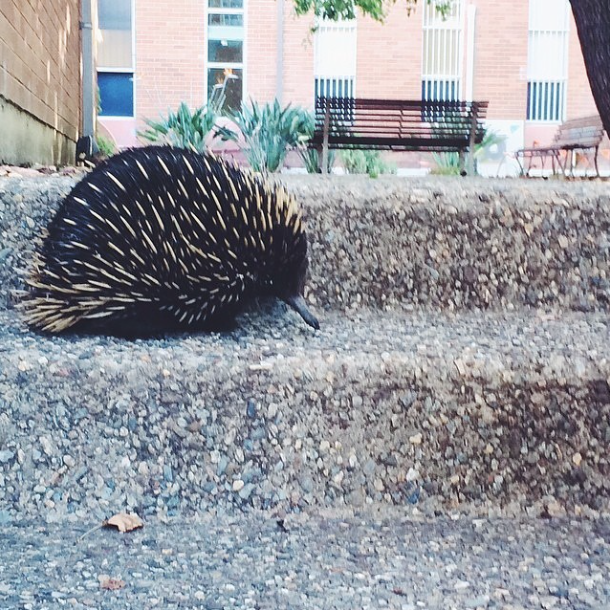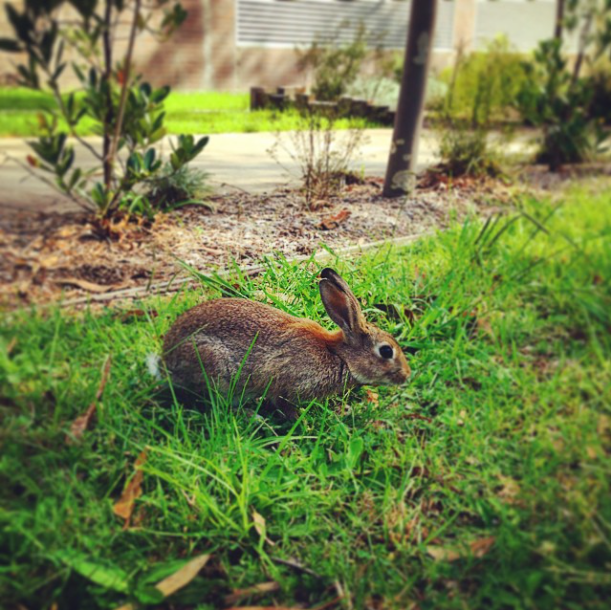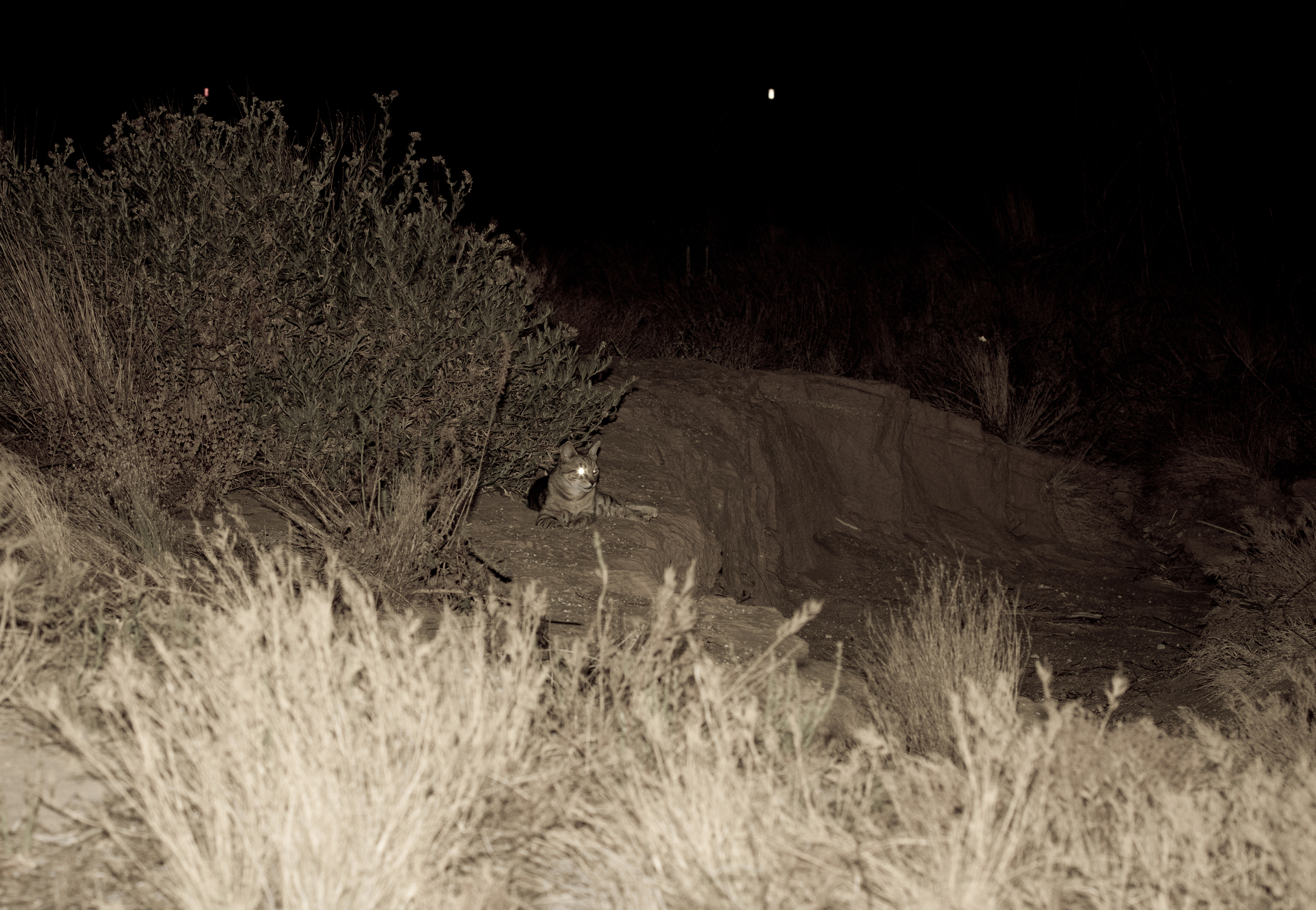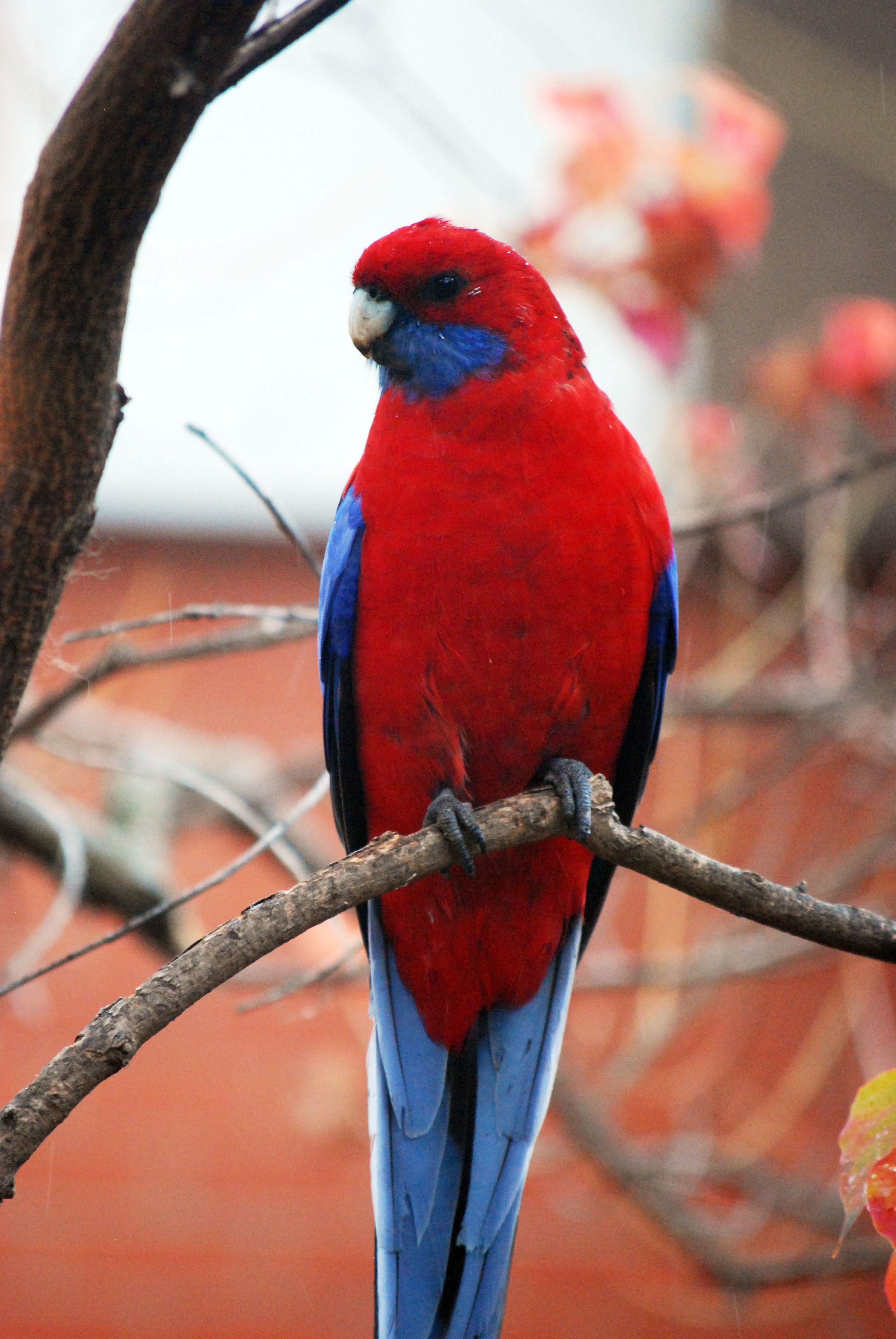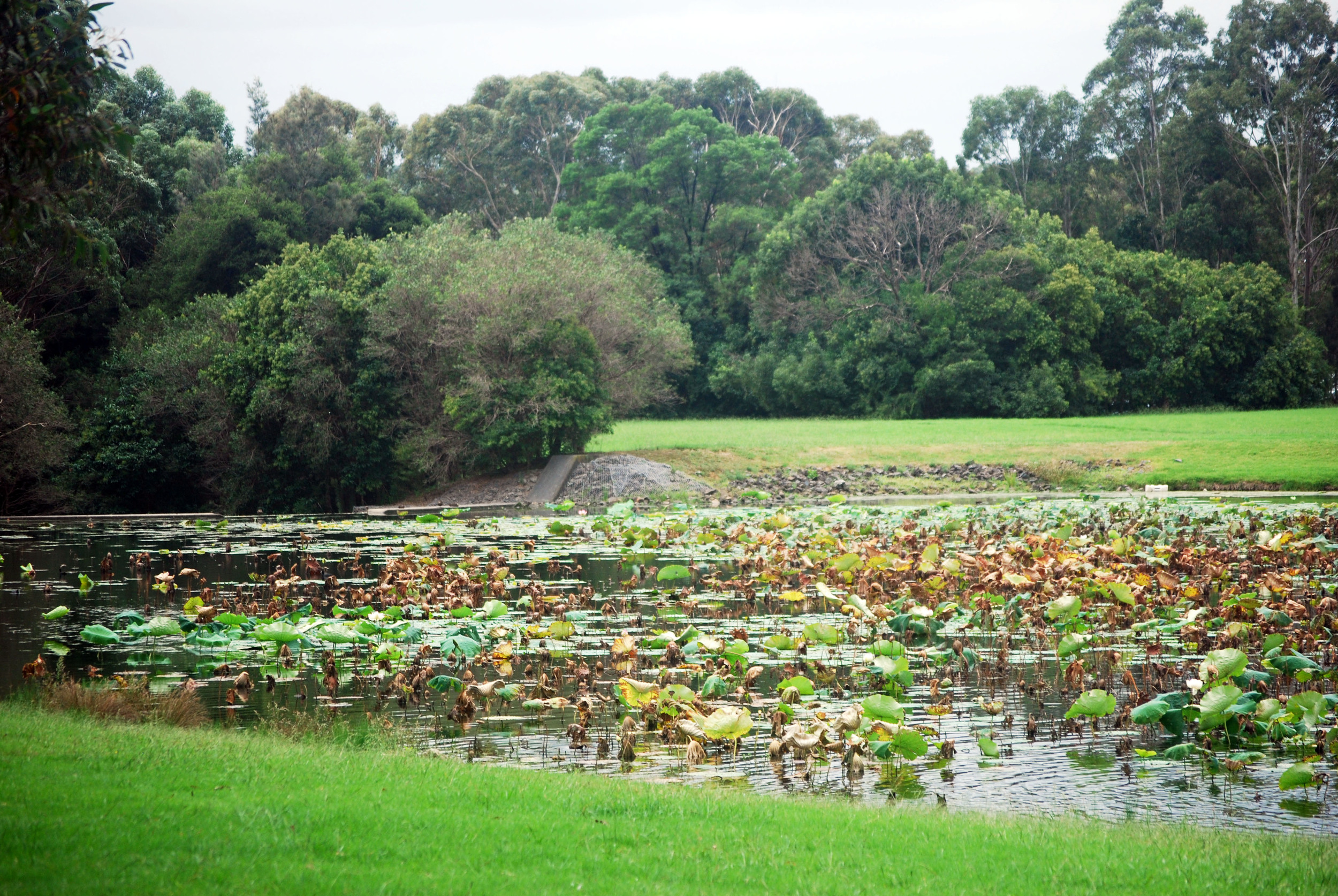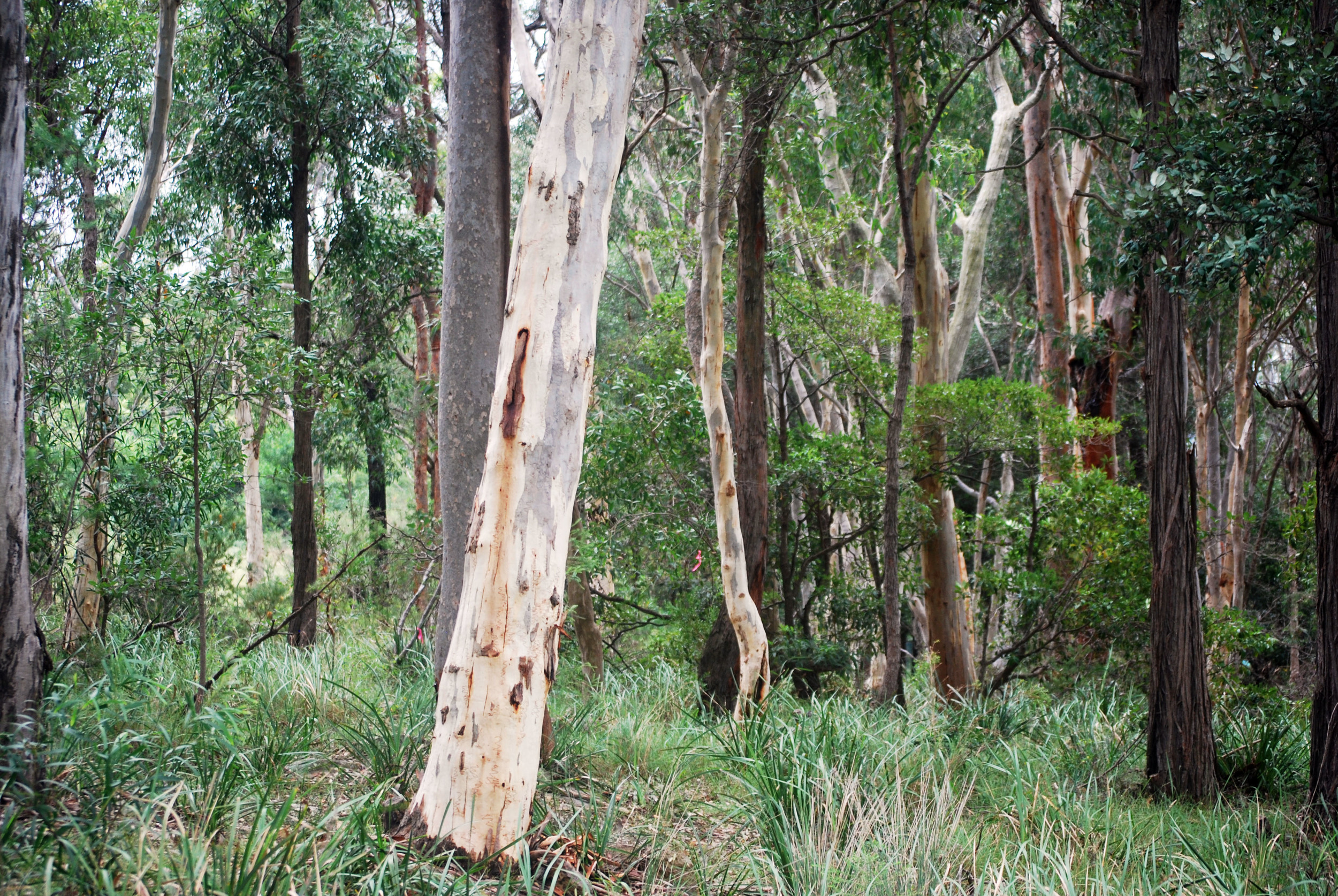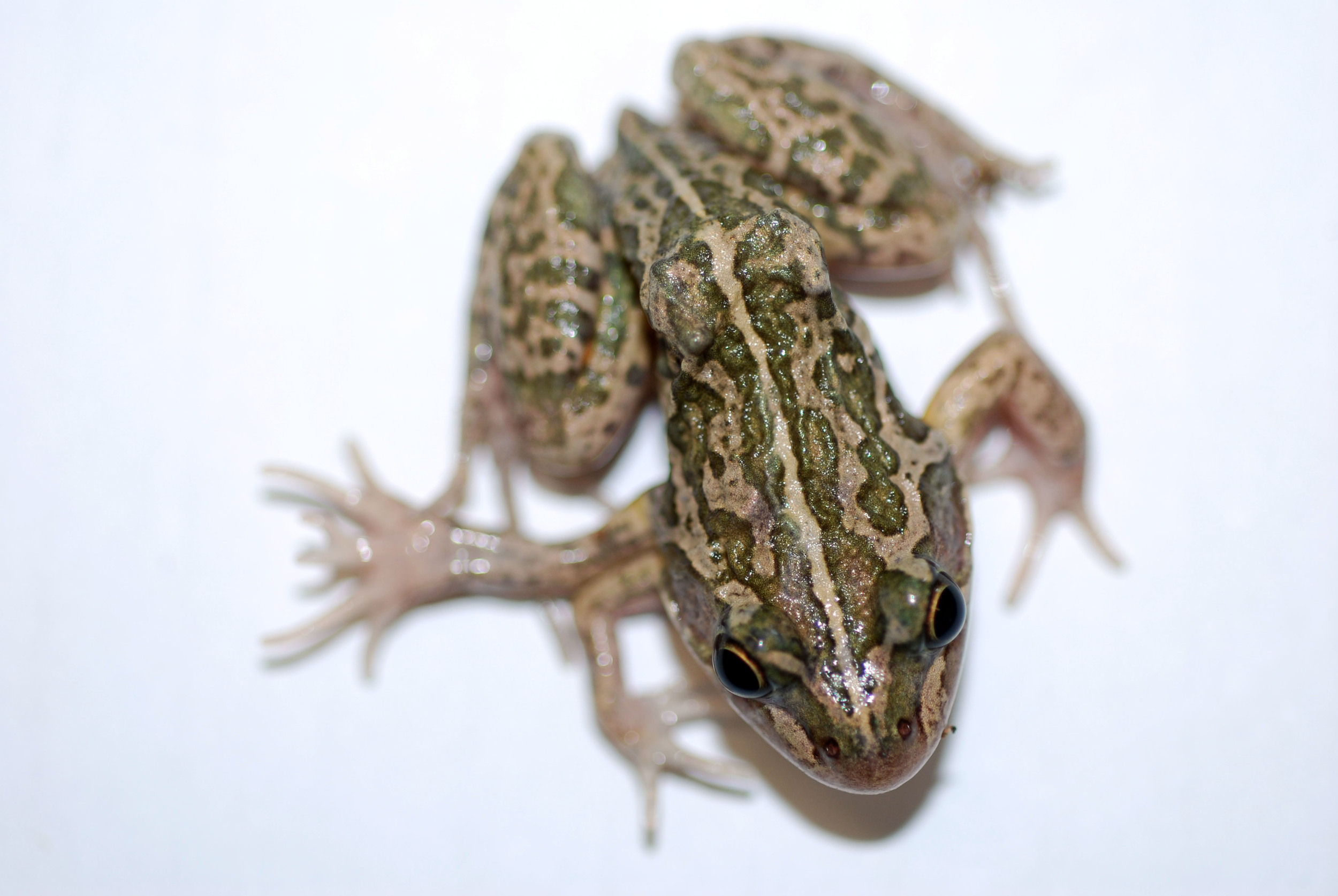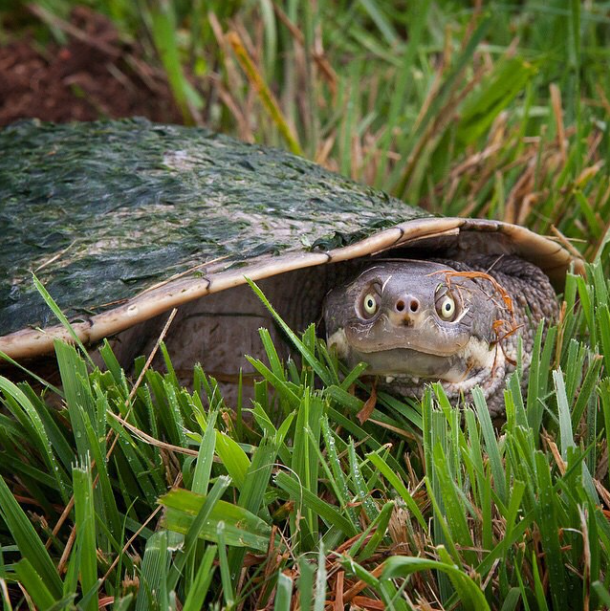As a wildlife lover, I'm lucky that the places I work are full of wildlife. Throughout my PhD I've been primarily based at the Australian National University (ANU) in Canberra, Australia. Canberra is known as Australia's "bush capital" because of the extensive natural areas that penetrate the urban environment here. As Canberra was a planned city, it was planned from the beginning to have large tracts of natural forest throughout the city, and so has largely avoided becoming the urban wasteland that has enveloped a lot of cities. I've also spent an extensive amount of time at Macquarie University (MQ) in Sydney. Sydney is older, larger, more densely populated and more ramshackle than Canberra, but still has managed to maintain an impressive amount of green space for a city of its size. Both MQ and ANU have benefitted from these efforts to maintain urban green spaces as they are both directly connected to extensive natural areas.
The ANU butts up against the Australian National Botanic Gardens and Black Mountain Nature Park, a large area of dry sclerophyll forest. MQ is adjacent to Lane Cove National Park, a long, narrow national park running through northern Sydney that protects the banks of Lane Cove River and consists mostly of wet eucalypt forest.
In addition, both universities are making concerted efforts to be eco-friendly and both have characteristics that help attract wildlife: streams running through them, including wetland habitat,patches of forest, and artificial habitat-enhancers, such as nesting boxes for possums. Both ANU and MQ take great pride in promoting the native wildlife that can be found on campus. MQ has posted on its website a list of wildlife known to live on or visit the campus. ANU, to my knowledge, does not have such a list on its website, but did post this article about the wildlife that can be found there. I e-mailed the author of that article and she courteously sent me a list of the animals known to live on or visit ANU. The lists aren't compiled in the same way. The ANU list is based off of systematic surveys of the ANU campus and surrounding area done by a campus group called ANUgreen. ANUgreen uses consistent and repeatable survey techniques - different kinds for each vertebrate group - and conducts surveys regularly. The MQ list, on the other hand, seems to be more haphazardly put together, the result of asking enthusiastic wildlife observers on campus what they've seen. However, MQ is apparently in the process of designing more rigorous survey methods similar to those in place at ANU.
Since ANU and MQ are quite close to each other, by Australian geographical standards anyway, the lists have a lot of the same species. And since I've spent a lot of time on both campuses and like to watch wildlife, I wanted to see how my own observations at ANU and MQ stack up against the "official" lists.
Mammals
These echidna (L) and eastern grey kangaroo (R) pictures are from the ANU Instagram page, which posts many great pictures of wildlife on campus.
ANU's mammal list is short but it's got some cool stuff in it. The macropods, the eastern grey kangaroo and swamp wallaby, are both common just over the road on Black Mountain. Neither lives on the ANU campus, but both make regular visits. I've never come across swamp wallabies on campus, but I've seen quite a few across the road at the botanic gardens. I've seen a few eastern grey kangaroos on campus, though, including one standing patiently at a campus bus station. Echidnas also don't live on campus but are common on Black Mountain and make regular campus visits. In fact, I can't think of a place on mainland Australia where wild echidnas are more common than Black Mountain. If visitors at ANU mention that they want to see an echidna, Black Mountain is where we send them. Sometimes it takes a few morning hikes, but it seems everyone comes across one eventually.
Adorable ringtail (L) and brushtail (R) possums live on ANU campus. ANU encourages them by provided artificial nesting boxes (R).
As opposed to macropods and monotremes, common ringtail possums and common brushtail possums are resident on campus. In fact, they are so common here that when a research group needs some subjects for their possum-diet-preference studies, they don't need to go off campus to get the number of animals necessary for their experiments. After the experiment is over, the possums are released back into their on-campus territories. Artificial possum boxes around campus provide convenient daytime resting spots, and whenever it's dark by the time I head home (which is, depressingly, almost all nights) I see at least one brushtail possum along the way. Ringtail possums are not as easy to see as brushtails, but are still common. We had a pair of ringtails take up residence in a banksia tree beside the biology building and while they were living there we saw them almost every day. Unfortunately for us they seem to have moved on.
The same banksia that hosted our pair of ringtail possums also attracts grey-headed flying-foxes when it's flowering. There's a balcony at the height of the banksia's canopy from which you can get really good eye-level looks at the adorable flying-foxes as they feed on banksia nectar. White-striped mastiff bats are on the list likely because their echolocation call is audible to the naked human ear, making them much easier to identify than other species of insectivorous bat. There's almost certainly a wider diversity of bats at ANU than is currently represented by this list, we just need to get someone in to do a proper bat-detection survey.
Some animals on the list I find suspicious. There are no wombat populations close-by and one would have to wander quite far, and survive several perilous road crossings, to get here. I've also heard that the wombat records for ANU are the result of incidental reports, not evidence having been detected during an official survey by trained individuals. Seeing as their burrows and scats are rather distinctive, if there were wombats living in or around ANU I would think they'd be pretty readily detected. But I could be wrong. I also thought the platypus seemed suspicious, but I'm inclined to believe the Australian Platypus Conservancy and not only because I like the idea of my home university holding the title of the only university in the world that's home to platypus.
European rabbits (L) and domestic cats (R) are unfortunately common across Australia, including on university campuses. The rabbit picture comes from MQ's Instagram page, while the cat picture (the only picture I have of a feral cat in Australia) was taken by Angus Kennedy in 2011 during fieldwork in South Australia.
ANU is unfortunately home to invasive mammals as well as the wonderful native ones. We have European rabbits here in plague proportions, as well as the much-maligned invasive predators, cats and foxes. I'm surprised cats are on the ANU's list but foxes are not because I see more foxes on campus than cats. I'm also surprised at the absence of black rats (Rattus rattus) on ANU's list. Though I've never personally seen one, I have seen evidence of them - in the form of their droppings - including in my office!
MQ doesn't yet have a mammal list. The only wild mammals I've seen at MQ are grey-headed flying foxes, though I did see a road-killed common ringtail possum just across the street from MQ and I've heard reliable reports of black rats on their campus, too!
Birds
These bird lists are long! Bird lists are always long. ANU's list is 90 birds long while MQ's is 60. Bird lists for any area are almost always longer than mammal and herp lists for several reasons. Birds are often genuinely the most diverse vertebrate group, especially in human-disturbed environments to which birds, in general, are better at adapting than mammals or herps. Furthermore, birds are easier to detect than mammals and reptiles, and often a single survey technique is sufficient to detect the vast majority of bird species, if they are present. In contrast, several different survey techniques are necessary to get at the full range of mammals and herps. In ANU's case, their survey methods for mammals and reptiles are limited and unlikely to detect the full diversity of species present, while their bird and frog surveys are more thorough.
Despite the length of the lists, ANU's and MQ's bird diversities are definitely underestimated. On their website, MQ has two bird lists: one of birds seen regularly on campus, and a second list for old records or unusual vagrants that were probably lost individuals. Since MQ's list is based on the observations of local bird enthusiasts, the number of unusual bird records is likely to be very high because bird enthusiasts tend to go out of their way to find unusual birds. I'm deliberately ignoring MQ's rare bird list to make their list more comparable to ANU's bird list, which is based on annual systematic surveys at a set of standardised locations. Therefore, ANU's list is more likely to represent accurately the common birds of the ANU campus and underrepresent the vagrants and unusual cases.
ANU's campus is home to some spectacular parrots, such as gang-gang cockatoos (L) and crimson rosellas (R).
Both lists show that the campuses are rich in certain groups of birds, mostly parrots, water birds and bush birds, and surprisingly lacking in other bird groups, namely birds of prey and grassland birds. Australia is known as the land of the parrots, and they are very conspicuous on both campuses. The common large cockatoos of eastern Australia, galahs, sulfur-crested cockatoos, and little corellas, are present in large numbers on both campuses (corellas somewhat less so than the other two). In addition, both campuses are lucky to have two of the most spectacular common birds I've ever seen: crimson rosellas and king parrots. Both species are more common at ANU (I've seen over 20 king parrots and 10 crimson rosellas at ANU today and it's barely past lunch time) but they're present on both campuses. In addition to these common species, some additional parrot species are around in smaller numbers: eastern rosellas, musk & rainbow lorikeets (at MQ only), red-rumped parrots (ANU only), gang-gang cockatoos (ANU only) and yellow-tailed black-cockatoos. By far my favourite parrot is the gang-gang cockatoo, it's a real charmer among birds. ANU campus has quite a few resident gang-gangs and I frequently hear their distinctive "creaky door" call while working at my desk. The tree outside my office window has allowed me to watch most of these parrots species, including gang-gangs, feed while I work (which, I must admit, has a negative impact on my productivity). We are very lucky to live and work in a country with such an amazing diversity, and amazing abundance, of charismatic parrots.
Wetlands at both universities provide habitat for numerous water-associated species like wood ducks (L). The wetlands area at MQ (R) is big but has a "lawn problem". Left photo provided by Cat Young.
Both ANU and MQ have creeks running through them: Sullivan's Creek at ANU and Kikkiya & Mars Creeks at MQ. Unfortunately, all three creeks are subject to hard banking along a significant portion of their length. Hard banking prevents natural habitats from existing along the banks of the creeks and therefore creates a relative wasteland for waterbirds. Fortunately, both Mars Creek at MQ and Sullivan's Creek at ANU have areas without hard banking where wetlands have been established (either naturally or actively by the universities, I'm not sure). In these areas a great diversity and abundance of waterbirds can be found. The most common waterbird on both campuses is the australasian coot, as it is on just about every waterway I've visited in Australia. However, the most commonly seen waterbird on both campuses is probably the wood duck, less because wood ducks are particularly common (they are not) but more because they spend little time in and around the water and more time grazing on grassy lawns where they're more likely to be noticed around campus. Wood ducks are something of an icon on campus and every year I enjoy watching new ducklings appear in the spring and grow up as the seasons progress. Turns out the official ANU and MQ Instagram page-managers also enjoy this, as both pages post more wood duck pictures than any other animal. There's even a Facebook page devoted to the wood ducks of ANU! A wide variety of other duck species, as well as black swans (ANU only), australasian darters (ANU only), a variety of cormorants, dusky moorhens and purple swamphens are also seen around campus. White ibis, famous in Sydney for eating trash, are common at MQ but absent from ANU. Strangely, white-faced heron, a bird common at ANU, is not on their official list.
Laughing kookaburras (L) are very tame at MQ and will steal your lunch if you're not careful. MQ also has a good patch of forest (R) but it's mostly off-limits to birdwatchers.
Bush birds, or birds that live in wooded areas, are also quite well represented. Both campuses have lots of large trees, including some small patches of forest, and are well-connected to larger forest patches, so it perhaps isn't that surprising that there are a lot of bush birds around. Probably the most noticeable bush bird on both campuses is the noisy miner, that obnoxious honeyeater that dominates urban green spaces and chases off just about all the other birds. Despite the miners, both campuses also have a decent variety of other honeyeaters such as red wattlebirds, yellow-faced honeyeaters, and eastern spinebills. Superb fairy-wrens are common on both campuses, and I've even seen them wander into the biology building at ANU. I've only seen laughing kookaburras at MQ, where they'll steal fries off your plate when you're not looking, but I've also seen them just across the road from ANU at the botanic gardens. Grey butcherbirds are common at MQ, and they too will steal your food off your plate, while pied currawongs are much more common at ANU. ANU in general has a more extensive bush bird list. I suspect this may have to do with the best area of forest left at MQ being a little off the beaten path and mostly protected from bird watchers by fencing, preventing the true diversity of bush birds at MQ from being recorded.
This pacific baza seen at MQ is so adorable I just had to post two pictures of it. It kept its eye on me!
Both lists are lacking in birds of prey, which is somewhat surprising. Wedge-tailed eagles are common in Canberra and white-bellied sea-eagles are common in Sydney. Surely they should be seen soaring above ANU and MQ respectively every once in a while? To be fair, MQ has several birds of prey on its rare birds list, but I'm still surprised they aren't more regularly seen. One bird of prey that is regularly seen at MQ is the pacific baza. MQ is where I saw my first ever pacific baza and it continues to turn up regularly in the same spot. I think it might live in MQ's fenced-off forest area, or in Lane Cove National Park. ANU's raptor list is only three species: peregrine falcon, Australian hobby and grey goshawk. There is a resident pair of peregrine falcons in downtown Canberra and I've seen them hunting on ANU campus before, so that doesn't surprise me. Australian hobbies are around, but they aren't common, so it's reasonable that they're on the list but surprising that they aren't accompanied by more common raptor species. Grey goshawk is a real oddity, though. They are in Canberra, but they're very rare here. I've never seen one anywhere in Canberra, nor have I ever met anyone who claims to have seen one in Canberra. That it would have been seen on ANU campus while more common Canberra raptors such as brown goshawk, collared sparrowhawk, black-shouldered kite, whistling kite, swamp harrier, and brown falcon have yet to be seen is a huge coincidence. It's even more surprising since grey goshawk is much more common in Sydney, and I've seen them in Lane Cove National Park, spitting distance from MQ (whose list they're not on). I have a sneaky suspicion whoever wrote the list meant brown goshawk. I have to admit, though, that I don't think I've ever seen a raptor on ANU campus, though I've seen collared sparrowhawk just over the road in the botanic gardens carpark.
Both lists are also lacking in nocturnal birds and grassland birds, but that is less surprising. Nocturnal birds are not usually detected using normal bird survey methods. Barn owls are common in Canberra, and I saw one once outside my window while I was working late at ANU, but that's the extent of my nocturnal bird observations on campus. The lack of grassland birds might be initially surprising, seeing as both campuses have large grassy areas, but these areas are heavily managed, including keeping the grass really short. This prevents the establishment of the sort of wild grassland habitat the birds need (I call this the "lawn problem"). MQ's rare bird list indicates that several grassland bird species, such as king quail and both species of songlark, used to be present but no longer are. It's interesting that universities seem to see the benefit trees and wetlands have but still like to keep their grass uselessly short, even in areas where it's really unnecessary.
Herps (Reptiles and Amphibians)
Eastern brown snakes live on ANU's campus. A young one passed by the biology building last year (L) and another individual was seen around the maths department (R). The right photo was provided by Kate Umbers.
MQ's reptile list is over twice as long as ANU's. I think this is a problem of search effort rather than a real difference, although Sydney does have a wider diversity of reptiles compared to Canberra. ANU's list is based on one two-hour search period in some "likely habitat" whereas MQ's list is from an experienced herpetologist's observations over four years. I suspect the ANU surveyor's "likely habitat" choices did not included habitat likely to hold snake-necked turtles or fence skinks (though the latter are rare in Canberra and unlikely on ANU's campus). A more sustained effort at ANU would certainly turn up additional species, and I know this because there are several reptile species resident on campus that are not included on the list! This includes the eastern brown snake, which I saw when a young one happened to accidentally stumble into the biology building last year. I also know of several other reliable sightings of brown snakes on campus, including a large individual that used to live in the old wallaby paddocks (back when we had wallabies) and another one that seems to live somewhere over by the maths cottages.
These two little brown skinks were found on ANU's campus. Can you tell the difference between a garden skink (L) and a three-toed earless skink (R)?
Australia has a little brown skink problem. There are way more skink species in Australia than there are all other lizard species combined. The current count of skink species in Australia stands at about 450 (new species are constantly being discovered) whereas there are less than 300 species of lizard in Australia which aren't skinks. Not only are skinks the most diverse lizard group in Australia, they are also the most abundant and most conspicuous. So, like everywhere in Australia, but especially in urban environments, the reptile lists for both ANU and MQ are dominated by skinks. The vast majority of skink species - and therefore the vast majority of lizard species - in Australia are small and brown. Like the little brown bird problem amongst bird watchers, this divides wildlife enthusiasts into two groups: those that throw their hands up in frustration and say they all look alike, and those that look closer to try and find the minute differences in appearance that separate the different species of skink. I belong to the latter category. ANU is home to three species of skink (that we know of), two of which are little and brown: the garden and three-toed earless skinks. However, the common blue-tongued skink is a spectacular large-bodied beast of a skink with a bright blue tongue. I came across a baby blue-tongued skink in the vegetable garden of one of ANU's student residences a couple years back. It was the most adorable baby lizard, but tragically I didn't have my camera with me at the time. The blue-tongue skink is another ANU resident that is not on ANU's official list.
MQ has a few more skink species on its list than ANU. The most common species is still the garden skink. I was working in the basement of the biology building at MQ during baby-garden-skink-hatching season, and I kept finding tiny baby skinks on the floor of the basement hallway which I would gently scoop up and move outside. They were so small they could sit comfortably on my thumbnail! I'm guessing that garden skinks lay their eggs in cracks in the old building. When the babies hatch they manage to make it through the cracks into the building, fall to the floor and are trapped.They may also be able to get in if there's a poorly-sealed ground-level window, which basements often have. Eastern water skinks are also abundant at MQ, so abundant that they are collected from campus to use in behavioural experiments at MQ in a similar way to the possums at ANU, and then released once the experiments are complete.
Water dragons are common at both MQ and ANU. MQ has the eastern subspecies (L) while ANU has the Gippsland subspecies (R).
Wetlands are excellent places to spot herps as well as birds. MQ has at least three species of reptile living around its waterways: the aforementioned eastern water skinks, eastern water dragons, and snake-necked turtles. ANU also has water dragons, but they are the more southern Gippsland subspecies and look substantially different from the eastern water dragons in Sydney. ANU also has two species of turtle: snake-necked and Murray River turtles, even though they're not on ANU's list. Murray River turtles are a relatively new addition to the fauna of Canberra, the first record of one being from 1997. It's unknown whether the population is the result of migration or the release of unwanted pets, but they are now established in Lake Burley Griffin, which is where Sullivan's Creek terminates. Murray River turtles are also breeding in Canberra, including one individual found laying eggs on ANU's campus! Long-necked turtles have always been native to the area and are also found in Sullivan's Creek.
This five-legged spotted marsh frog (L) was found on ANU campus by a staff member and brought into the Biology Department to make sure it was okay. This Murray River turtle (R) was found in the act of laying her eggs on ANU campus. The right photo is from the ANU Instagram page.
I'm ashamed to say I've never seen a single frog in the wild on either ANU's or MQ's campus. Frogs in Australia are rather secretive, and the best way to find them is by sound, not by sight. ANUgreen does some excellent and thorough frog surveys in collaboration with ACT FrogWatch and has detected seven species of frog on campus, the most diversity of frogs for any location in the city of Canberra! The only frog I've ever seen from ANU campus was a five-legged spotted marsh frog that someone brought in for us frog-geeks to check out. After taking some pictures, we gave it back to the person who brought it in so they could release it back where they found it. MQ's frog list is significantly smaller than ANU's, and this may be because MQ does not, as far as I can tell, conduct systematic frog call surveys on campus. An excellent frogger I know says there's at least one additional species of frog at MQ, the leaf-green tree frog (Litoria phyllochroa). For my part, I've heard frogs on both campuses. I've just never seen one.



